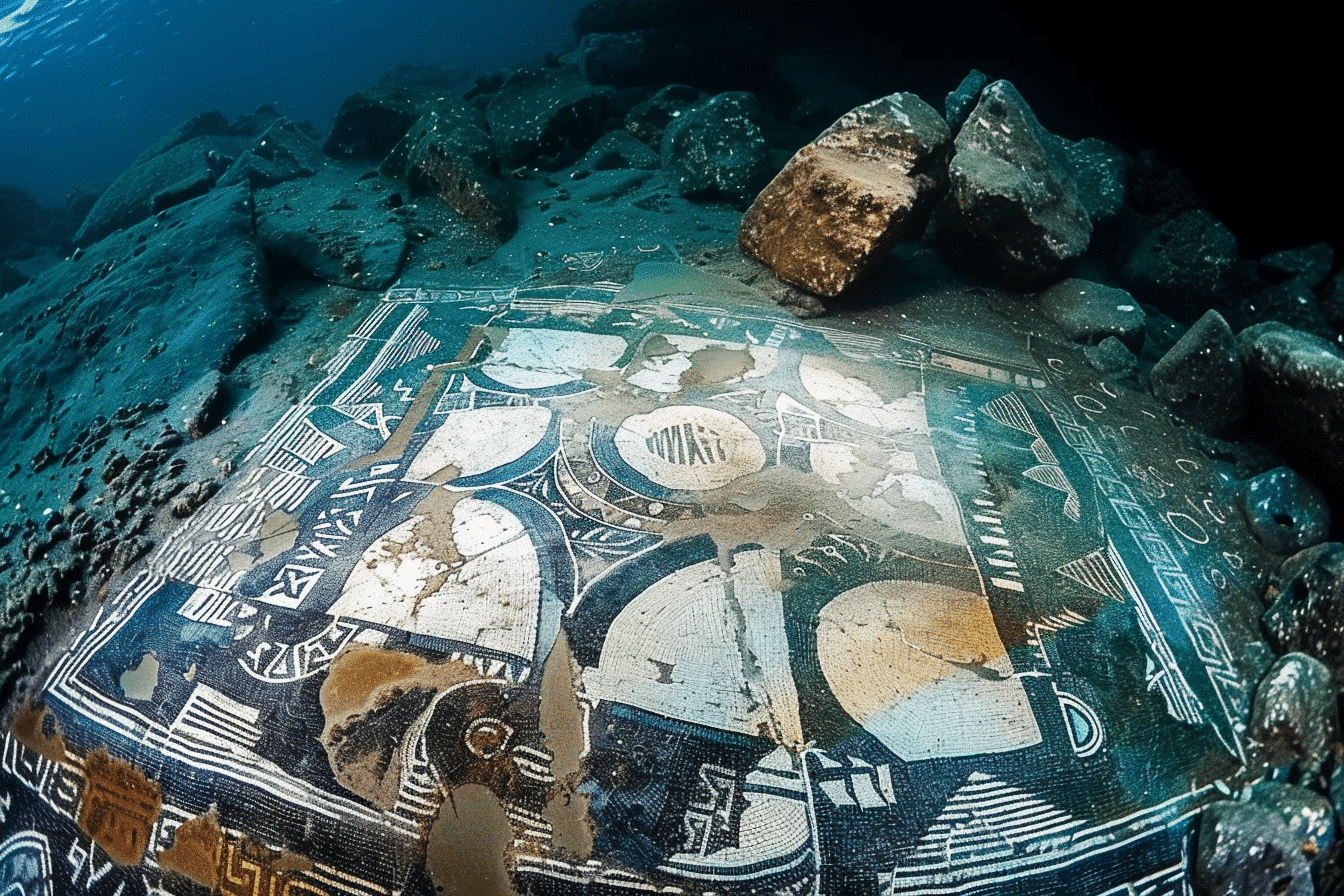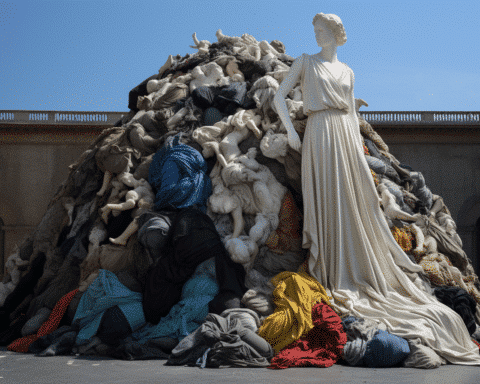An ancient Roman mosaic floor from a villa has been discovered underwater off the coast of Naples, shedding light on the area’s rich history. This stunning find offers a glimpse into the luxurious lifestyle of ancient Romans and the geological phenomena that have preserved these treasures beneath the sea.
Unveiling the Hidden Mosaic
The marble mosaic, once part of the “protiro” or decorated porch of a villa in the ancient spa town of Baiae, has been uncovered by the Campi Flegrei Archaeological Park, part of the Italian Ministry of Culture. The mosaic floor, now submerged due to a geological phenomenon called bradyseism, was originally part of a residence overlooking the sea. The phenomenon caused the ground to sink, submerging parts of the ancient town, a popular retreat during the late Roman Empire, hosting figures like Julius Caesar and Emperor Nero.
Intricate Design and Historical Significance
Preliminary research indicates that the mosaic comprises irregularly shaped pieces of reused marble, a technique prevalent from the 3rd to the 5th century CE. The Campi Flegrei Archaeological Park noted, “The marble is also broken up because the walls of the room, which were more than 10 meters high, collapsed onto the floor.” The ongoing underwater work aims to uncover and restore more of the floor, with some sections removed and cleaned on land. The ultimate goal is to reconstitute an entire floor section, showcasing the intricate craftsmanship of ancient Roman artisans.
Geological Wonders of Campi Flegrei
The discovery site, Campi Flegrei, is a large volcanic area extending under the bay of Naples and the islands of Capri and Ischia to the outskirts of Naples. This giant caldera, active for 39,000 years, includes multiple volcanoes, many of which lie underwater. The last major eruption in 1538 created a new mountain in the bay. Since December 2022, seismic activity in the area has been intensifying, raising concerns among experts about the potential reawakening of the volcano.
A Dive into History
Today, the submerged ruins of Baiae offer a unique diving experience, attracting enthusiasts eager to explore the underwater archaeological treasures. Local mayor Josi Gerardo Della Ragione described the find as “stupendous,” highlighting the town’s historical significance and the impact of bradyseism. “The floor would have been laid toward the end of the Roman Empire, shortly before bradyseism brought these wonders to the bottom of the sea,” he added.
The discovery of the ancient Roman mosaic floor off the coast of Naples is a testament to the enduring legacy of Roman architecture and the powerful forces of nature that have preserved these historical treasures. As underwater excavation continues, more ancient world secrets may yet be revealed, offering new insights into our past.


